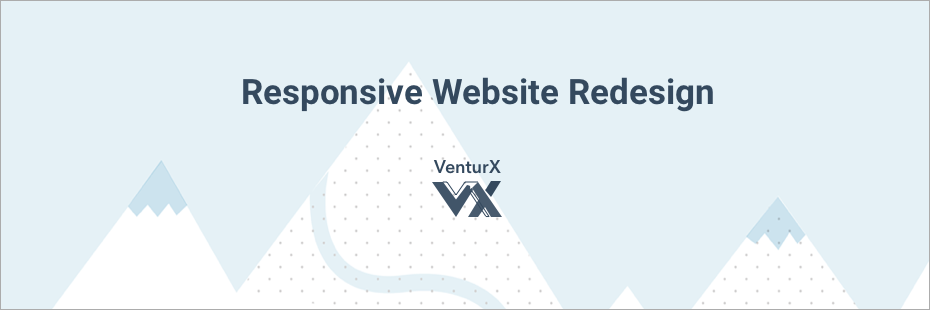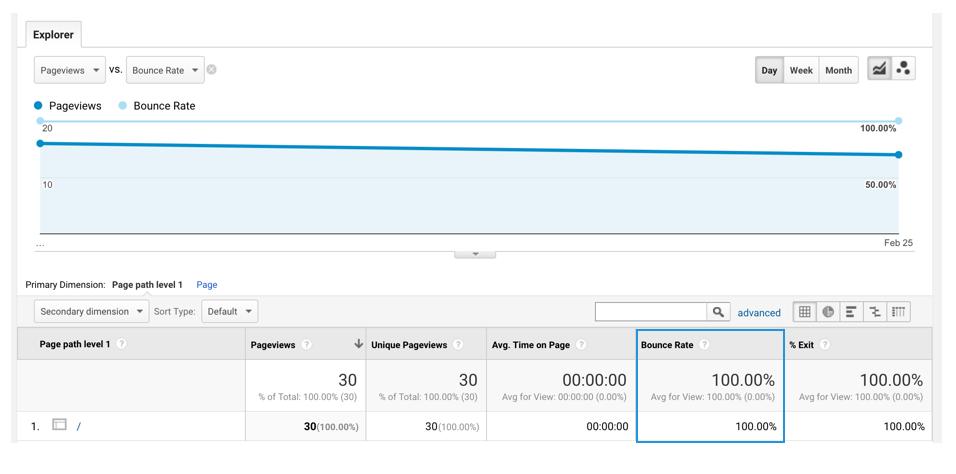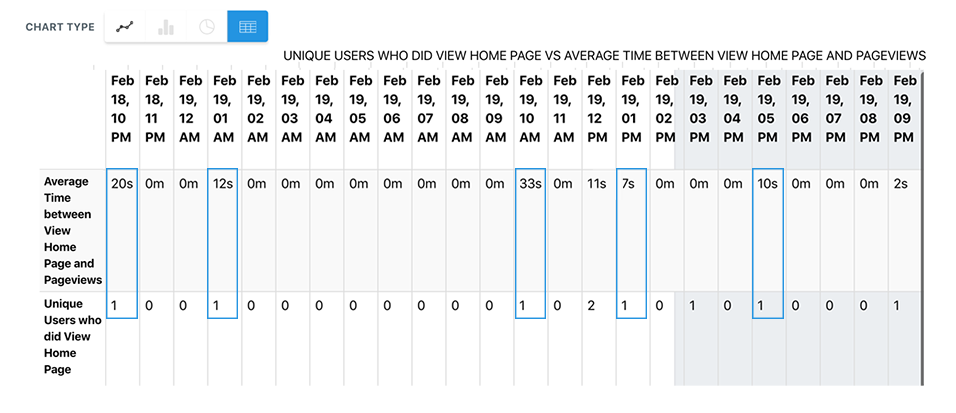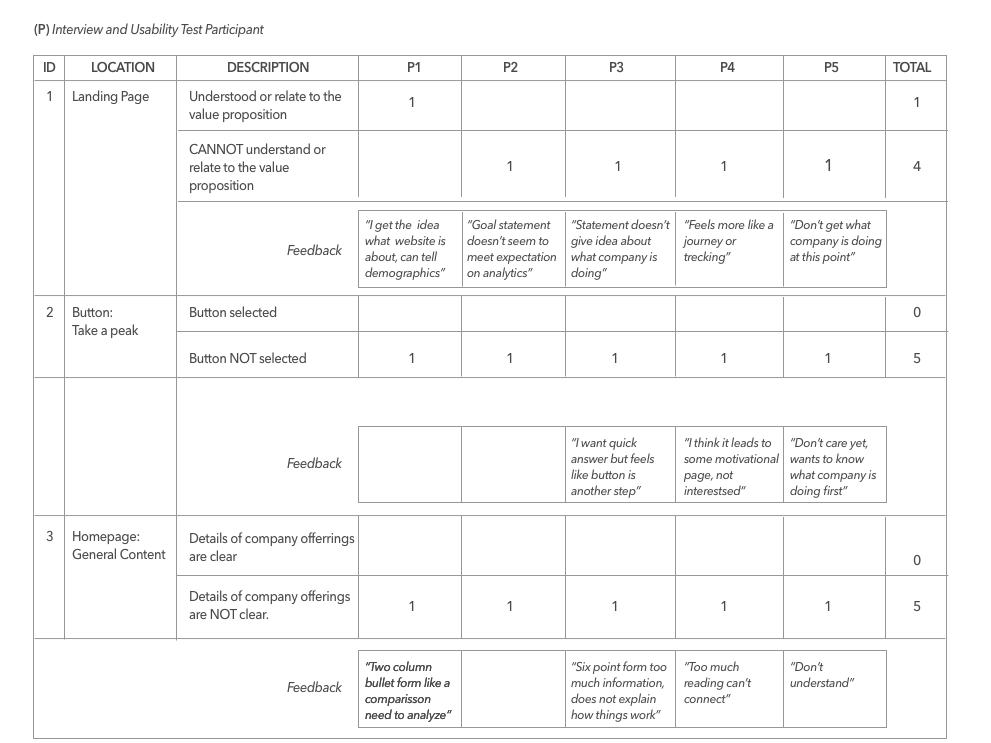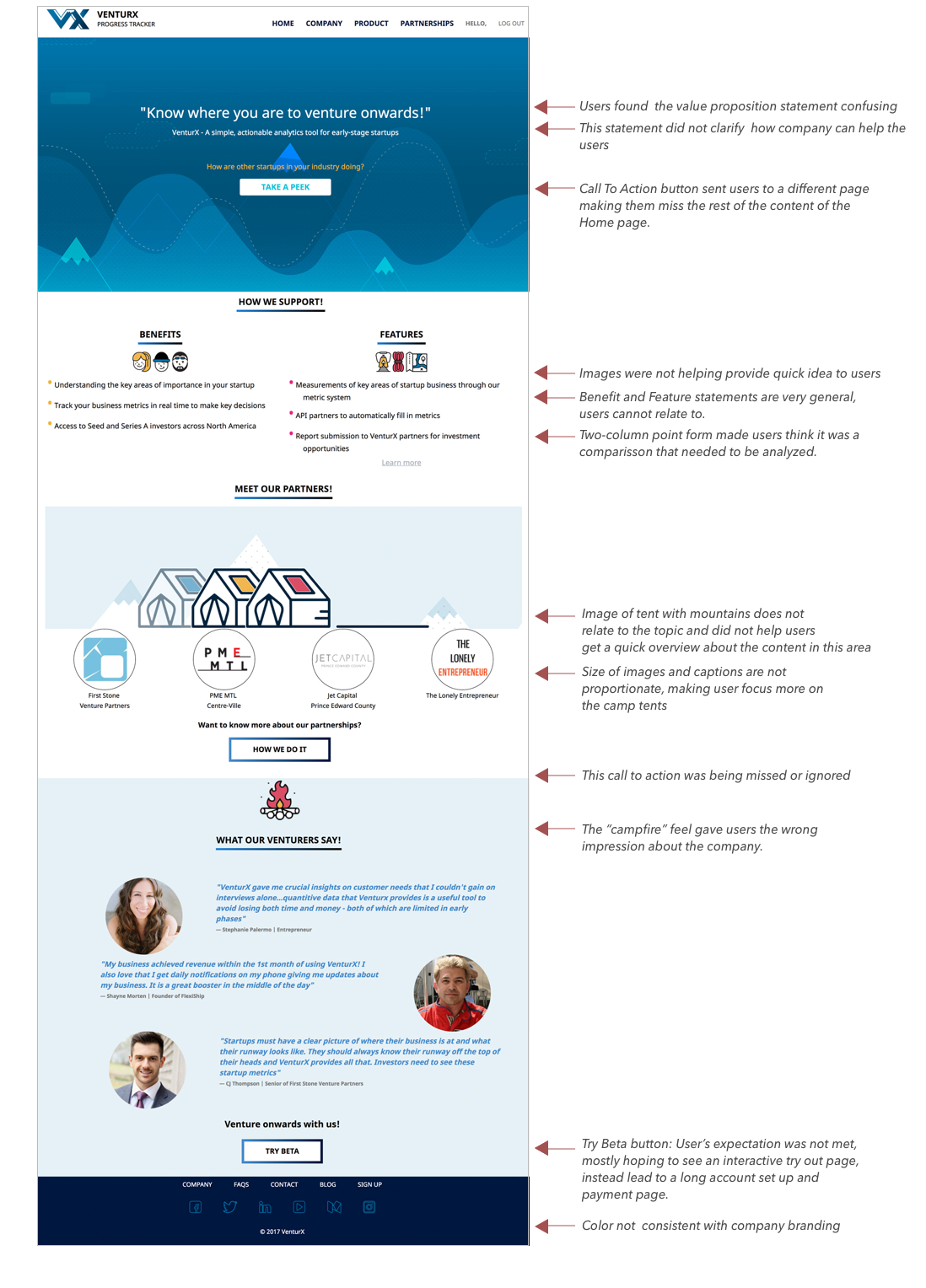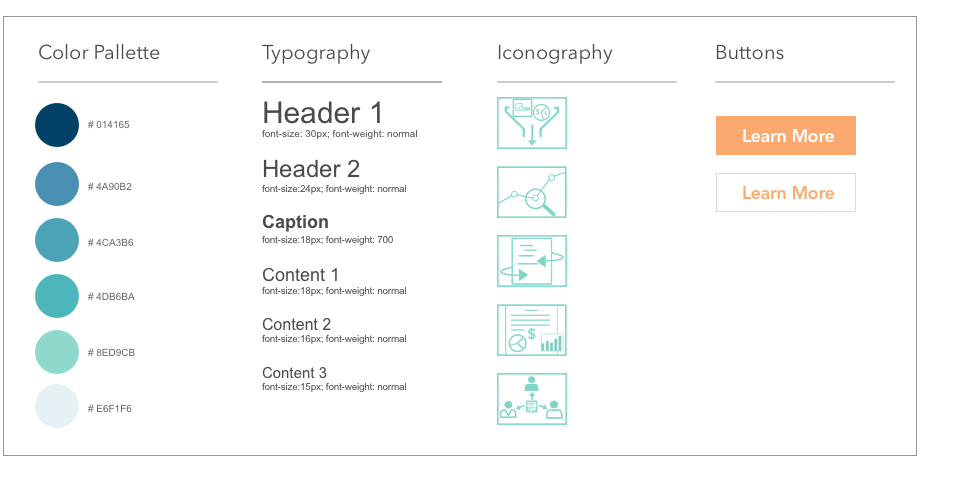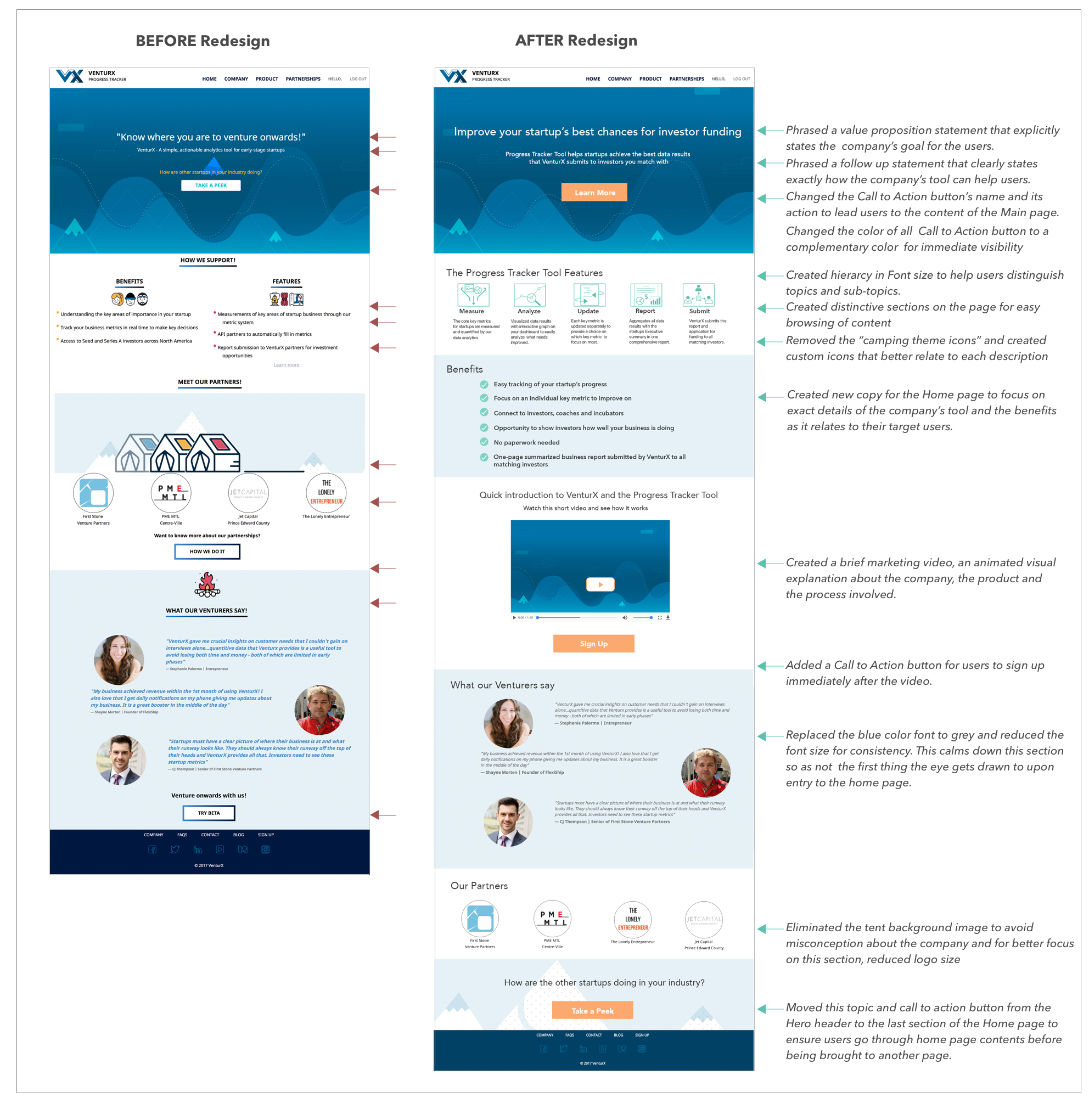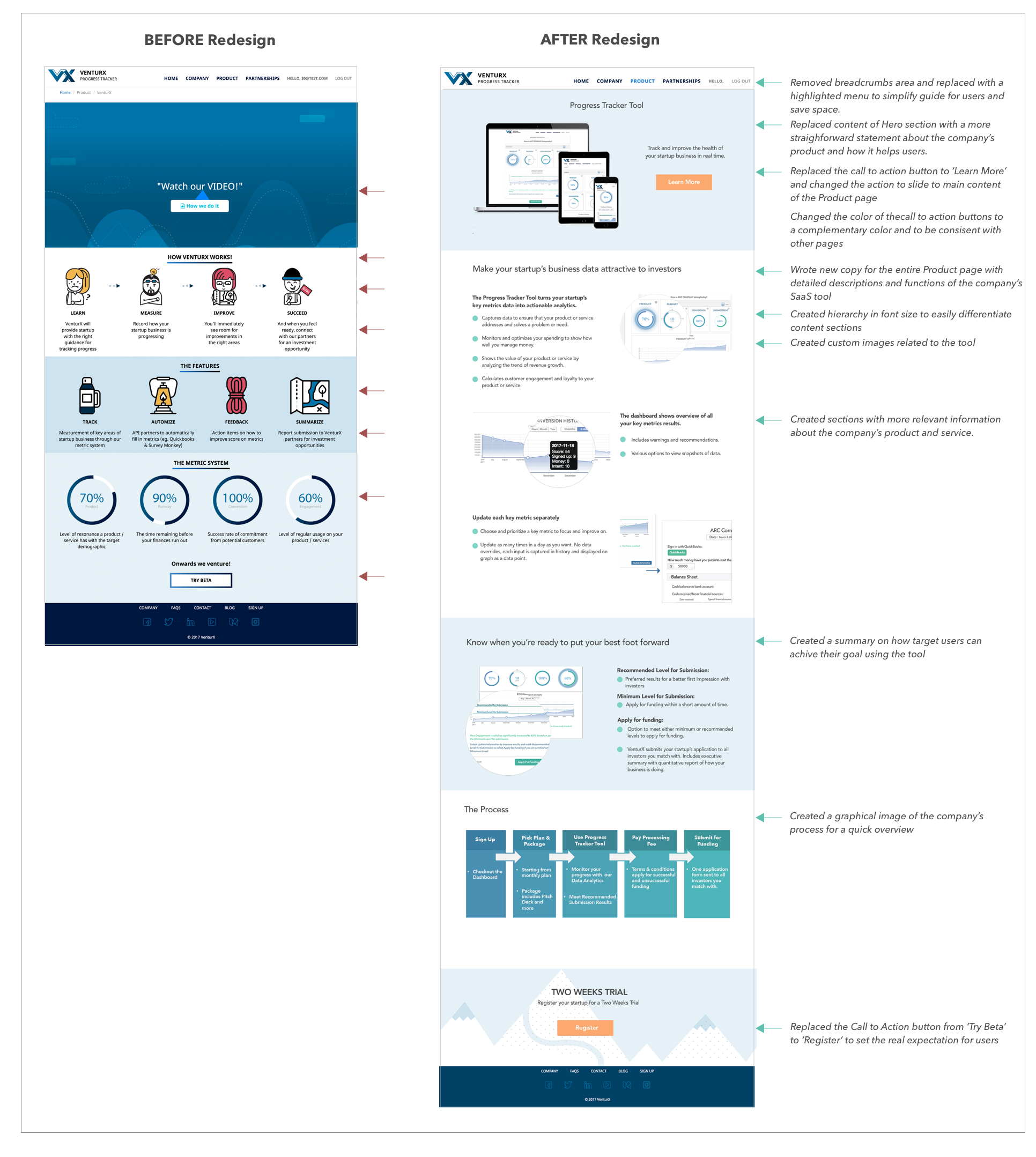Using Heap and Google Analytics
To validate the assumptions, I sorted the website's data using Google and Heap Analytics to find out about the website’s Bounce Rate, user’s Time On Page and Conversion.
First, I focused on the most important page of the website - the Landing Page and Home Page. Starting with Google Analytics, I looked at the website's BOUNCE RATE results specifically on the Pageviews (i.e. each instance of a page load).
The table above (Table-1-Bounce-Rate) is a screenshot of users in one day. It shows that everyone that viewed the Home page have NOT viewed a second page on the site.
But Google Analytics formula for Bounce Rate does not measure the time a user spent on the last page. If the visit is a bounce (that is, the visitor leaves after viewing just one page), no time will be recorded (i.e. 00:00:00)
“So how much time do users really spend viewing or reading the content of a page?” To find out, I used Heap Analytics TIME ON PAGE.
Image above (Table-2-Time-On_Page) is a snapshot of Heap Analytics on time spent by each users within each hour of one day.
The results show users time on page is mostly under a minute, ranging from 7 seconds to 33 seconds. This is very fast considering the fact that the website has multiple pages, links and call to action buttons. “Are the users not interested in the content?” or “Is the content not catching their attention?”
The third data I had to verify was Conversion. Below is a snapshot of Google Analytics CONVERSION table based on a one-week period (Table-2-Conversion ). It shows that out of 177 users that interacted with the website averaging to 191 sessions, none have signed up.
So to find out reasons for high drop-offs and low engagement, I conducted Usability Testing sessions.
Contextual Interview and Usability Testing
Qualitative Research
Interviews and user tests were done with the company’s intended target market group, comprised of early or advanced startup entrepreneurs. Remote user testing sessions involved screen share and screen capture. Test users were observed using their own computers or devices. They were asked to speak their thoughts aloud while going through some tasks on their own and as directed.
Quantifying the Results
The interviews were transcribed on a spreadsheet which includes my observation results and the test users’ actual comments. All results were organized, quantified and tallied by code on a table that specifies the parts or elements of the website.
The results were categorized by website page. Table-4 below is a snapshot of a quantified result from five participants that completed the task in the Home Page
Table-4-Home Page Test Results


